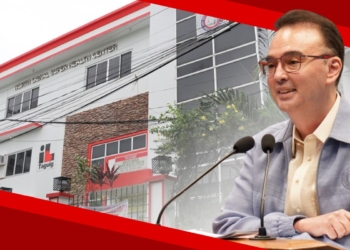Senator Alan Peter Cayetano on Wednesday said the rising cost of the New Senate Building (NSB) could have been avoided if the Department of Public Works and Highways (DPWH) had actively consulted the Senate prior to finalizing the Detailed Architectural and Engineering Design (DAED) of the project.
“How could we have avoided those revisions? Kasi looking back at all these papers na ibinigay ninyo sa opisina ko, avoidable ang mga ito,” Cayetano told the DPWH during the public hearing of the Senate Committee on Accounts on July 3, 2024 regarding the review of the NSB.
As the chair of the Committee on Accounts, Cayetano stressed that the review of NSB construction aims “to establish a clear completion date, cost, and design that the Senate and the public can rely on.”
Cayetano argued that the ballooning cost of the construction was “avoidable” if the DPWH, as the project manager of NSB, had only followed the “standard procedure” of consulting the Senate before approving the DAED of the building.
“Paano ka makakagawa ng DAED kung hindi mo naman kinakausap ‘yung mga gagamit ng building?” he said.
“If you made all the revisions before DAED, may bayad ba ‘yan? Wala ‘di ba? Pero hindi ninyo kinausap ang Senado before DAED. Kinausap niyo after na, that’s why lumaki [ang gastos],” he added.
DPWH responded that they were unable to “foresee” the design revisions which required more spending for the project.
Cayetano insisted that this could have been avoided if the DPWH had initiated discussions between the Senate and Hilmarc’s Construction Corporation, the project contractor.
“Before DAED, wala kang redesign fees kasi nga wala pa ‘yung detailed design,” he said, emphasizing the correct procedural approach.
“Kaya tayo panay revision kasi pinag-usap ninyo ang Senate at ang contractor after na ng DAED,” he added.
Hoping to expedite the project review to finally achieve an “iconic and functional” NSB, Cayetano urged the DPWH to establish one committee that will make decisions without violating any law or protocol and to complete the Revised Detailed Architectural and Engineering Design (RDAED).
“Kung ano ang kulang na makakatulong sa amin para ma-desisyonan ito, i-submit [ninyo],” he said.






